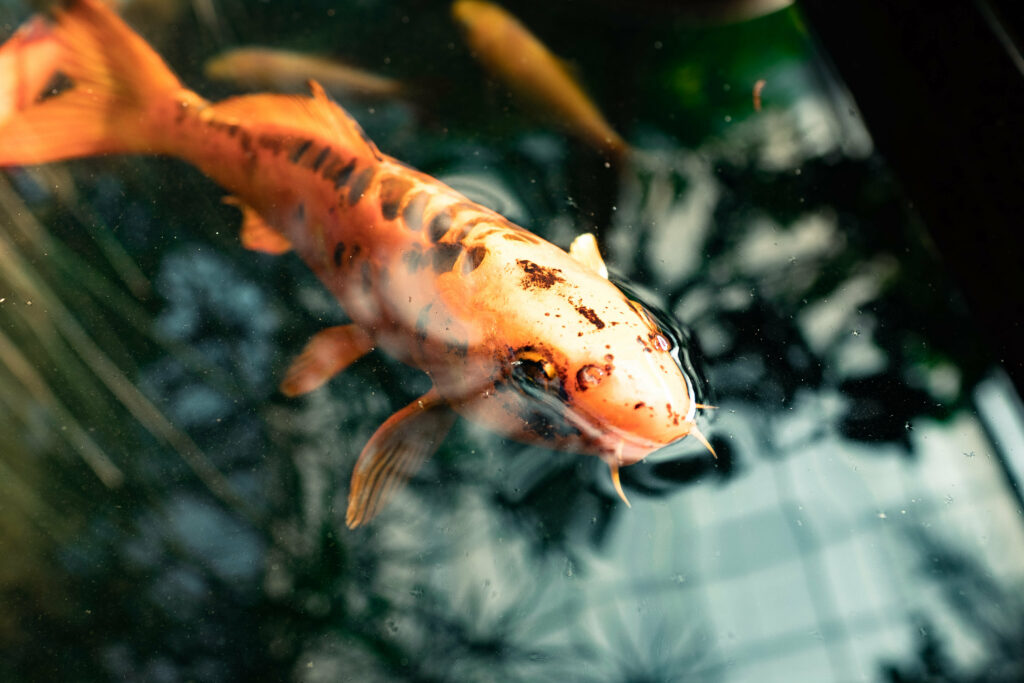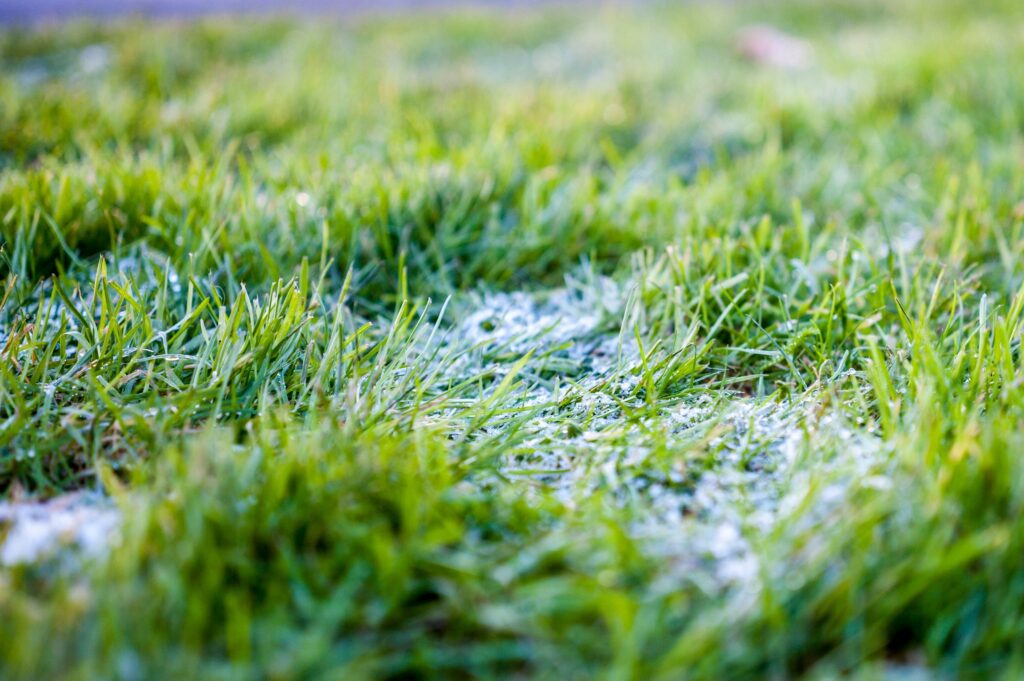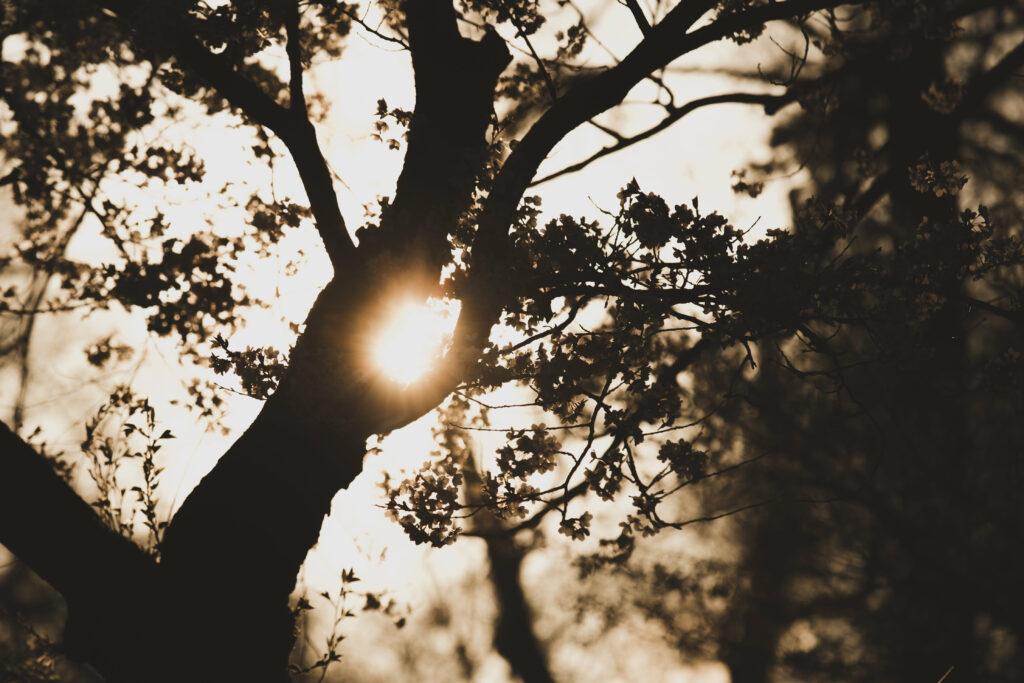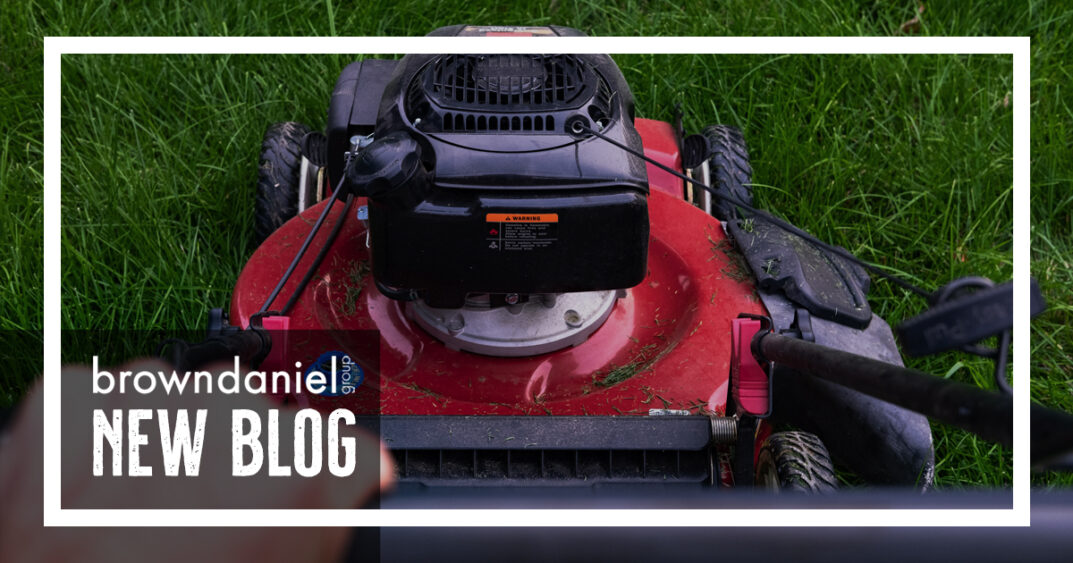
As winter winds down in North Georgia, we can expect to see more rain as spring showers settle in. After a nice drenching downpour, you likely expect to see puddles and spongy areas in your yard. But what if those areas never really dry out? Does it sometimes seem like your lawn is always wet or has standing water long after a rainstorm has passed? Are your pets and kids constantly tracking muddy foot and paw prints into your home? While this is no doubt annoying, it can also be problematic for your yard maintenance, causing clogged lawn mowers at times, and difficulty getting your grass to grow at all in some areas. Too much water can also be a prime breeding ground for mosquitoes and other pests. All of this can make it difficult for you to thoroughly enjoy your yard and outdoor scapes.
So what is causing the excess water in your yard? And more to the point, what can you do to remedy the situation? If you can pinpoint the cause of your soggy yard, you’ll be better able to eliminate the over abundance of water and improve your yard’s moisture content and overall health. Here are some of the common culprits when your yard just doesn’t want to dry out.
Problematic Landscaping

Any change you make to the landscape of your yard can affect the way moisture is retained, and where it gathers. Whether your yard has undergone a major transformation, such as the addition of a pool or patio, or if you’ve merely relocated a shed from one corner to another, any alteration can cause water to gather differently. Before you make a minor or major change, it’s important to think about how the irrigation of your yard might be affected. Unfortunately, people tend to add and rearrange these aspects of their landscaping only to find out later that the change has caused an increase in standing water in their yard.
Another factor in your yard’s standing water is the amount of vegetation you have to soak up the water as it rains. Grass and other plants drink much of the water that falls as rain, but if you have very little vegetation, you will likely see more standing water. If you are planning a change to your yard’s landscaping, be sure to take this into consideration. You can also take this opportunity to add irrigation systems to help the water drain properly.
If most of your yard is taken up by patio or a pool, you can still help your excess water situation by adding vegetation. Use what space you have to plant water hungry plants such as elephant ears and hydrangeas, so that their roots can drink up the extra water around your home. If it is an option for you, remove small sections of gravel or paving stone and replace them with additional water hungry plants.
Blocked Irrigation Systems

Many homes have irrigation systems installed when they are built, whether that means a system of drains running below the yard, or a ditch where water can flow as it moves downhill. Walk around your property and see where there are already irrigation tools such as these in place. If your water is not draining properly, check to see if any of these drains or ditches are blocked somehow. If a drain is stopped up, it will cause water to gather and sit somewhere in your yard.
Ditches and drains can get blocked by many things, such as grass clippings, leaves, sticks and even trash blown in from the street. Remove the debris, and water will flow through and drain your yard properly again. Drain pipes can be harder to clear when they are clogged, because it may be difficult to determine where the clog is, and even when you know, it may be hard to reach the clog. Big box hardware stores sell special tools you can use to extend down the drainage pipe and hopefully reach and remove the clog. If this doesn’t work, you will need to call a professional to remedy the situation.
Check Your Gutters
For most of us, our homes are the focal point of our property, and the most prominent feature making up our yard. But it might not be the first thing you think about as a culprit for your spongey, wet ground. As it turns out, clogged gutters can cause a great deal of excess water to build up in your yard if clogs are impeding the drainage of rain water around your home.
Standing water that just won’t go away close to your home isn’t just a problem for the health of your grass and soil, but it can also mean major problems for the structural health of your house too. Severe structural damage can result from excess water surrounding your home or seeping into or under the foundation.
Blame the Pipes
In an urban environment, pipes are everywhere just beneath the service of the ground. If you suddenly start seeing standing water that lasts for weeks and months without ever drying up, this water could be coming from a leaking pipe that is buried under your yard. How can you tell if this is the problem? Contact your water utility to see if your water service adds fluoride to the water it supplies. If it does, ask if they would be willing to do a fluoride check on the standing water around your home. If the test comes back positive, you can bet that you’ve got a leaking pipe. Another way you can tell if a leak is to blame is to shut off the main water valve to your property and check your meter. If the meter is still running, you probably have a leak. Repairs can be a major undertaking, and may include both an excavation company as well as plumber, depending on the nature of the leak.
Low Elevation Areas in Your Yard

If you have low spots in your yard, you have gravity to thank for the standing water that pools at the bottom. Even without an irrigation system in place, water will naturally form irrigation trails and drain to the lowest area of your yard. One option you have to remedy this situation is to embrace the water rather than fight it, by building a manmade pond at the point of lowest elevation. If however you do not like the idea of adding a water feature to your property, you can build up the area instead to increase the elevation. Try leveling up that part of your yard by adding dirt and gravel, which will both raise the elevation and aid with drainage.
Your Soil Could be to Blame

Certain soil types retain more moisture than others, so if you cannot determine any other reason for standing water in your yard, it could be the type of soil you have. If your lawn grows in a soil that has moisture-retaining properties, it makes it difficult for water to be absorbed down into the ground. If the soil in your yard has these qualities, it may take a few days after a steady rain before you see standing water start to disappear. For example, soil with a high clay content is very bad at absorbing moisture.
If you believe soil-type is part of your problem, you can try aerating or tilling your yard and adding another type of soil or sand as you go to alter the soil balance. Aeration will help water flow better through your soil and enable it to be absorbed much more quickly, while adding other types of soil or dirt helps by gradually changing the type of soil found in your yard. Mixing sand into the top 6-8 inches of soil in your yard is the best way to fix this situation, though it will mean that you need to re-sod the area after you are finished. As for aerating, you can rent a commercial-grade power aerator for large lawns or a manual model if your yard is on the smaller size. If you have very little yard to work with, you can even skip the aerator altogether and instead stab a metal pole with a sharp end or a pitchfork repeatedly down into the ground.
Too Much Shade

If much of your yard remains shaded throughout the day, no matter what direction the sun is shining from, this can also be a problem when it comes to excess moisture. Shade alone does not cause standing water to build up, but it does prevent the sun from working its magic to evaporate water from puddles around your yard. If large trees are blocking your yard’s view of the sun, consider trimming back some of the branches. Keep in mind though, this is a task best left to the professionals if a tree is very tall.
Extreme Cases
If you’ve already tried some of the suggestions above but it doesn’t seem like anything you do really makes a difference in your yard’s moisture content, you may need to have your entire yard regraded in order to see real results. This is something that is handled by professionals, and can be rather expensive as heavy equipment is used to change the grade of your yard and also alter the draining patterns and irrigation pipes. However for some stubbornly wet yards, it may be the best option.

